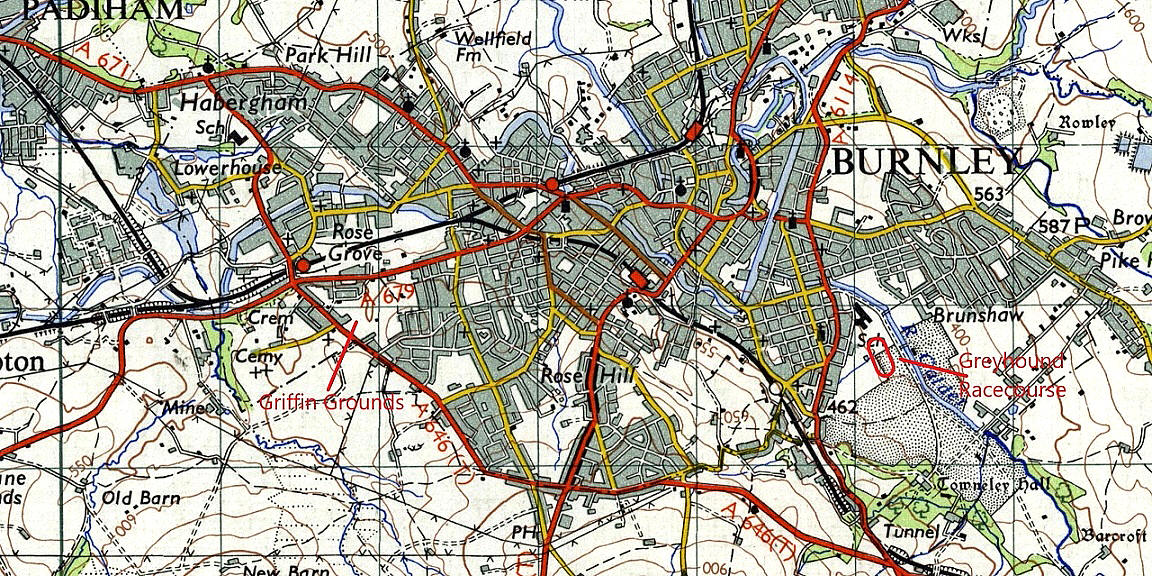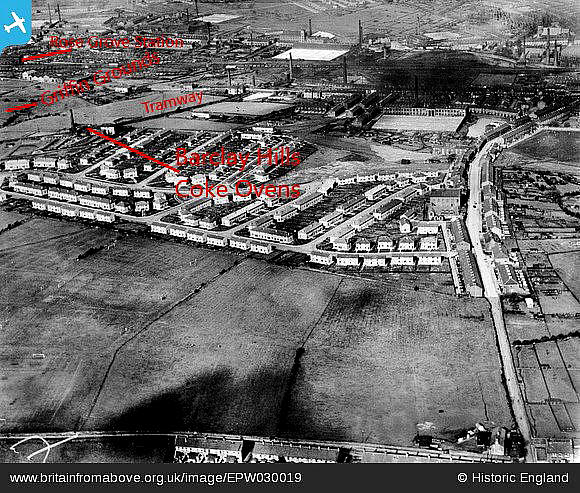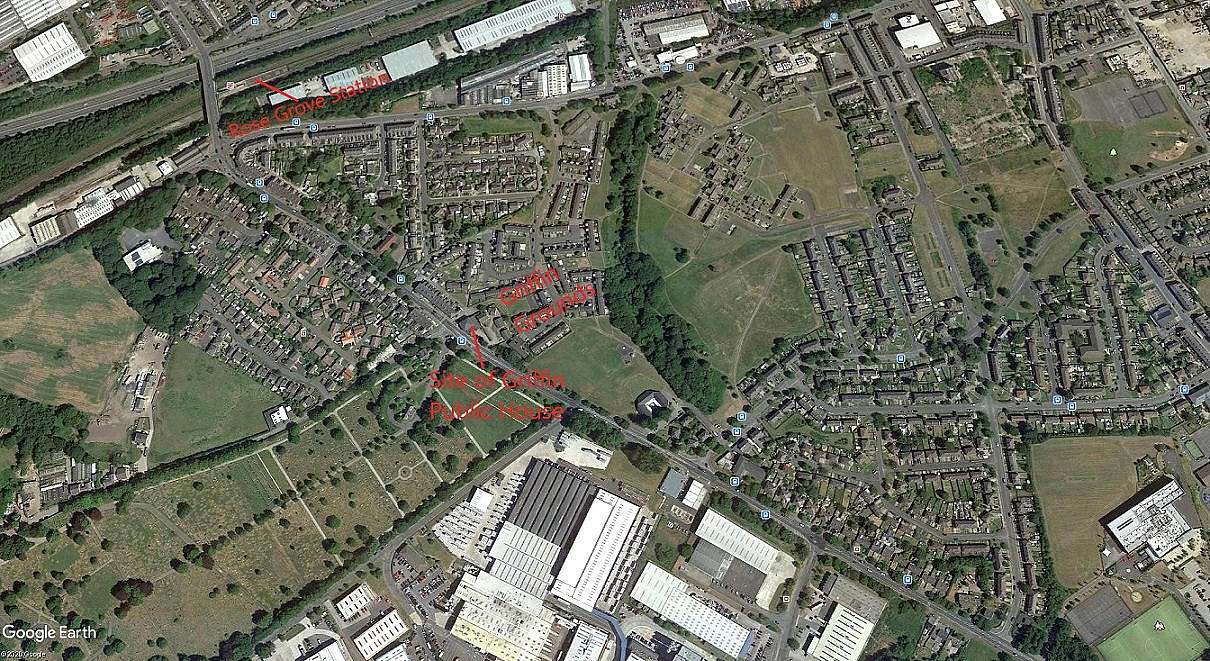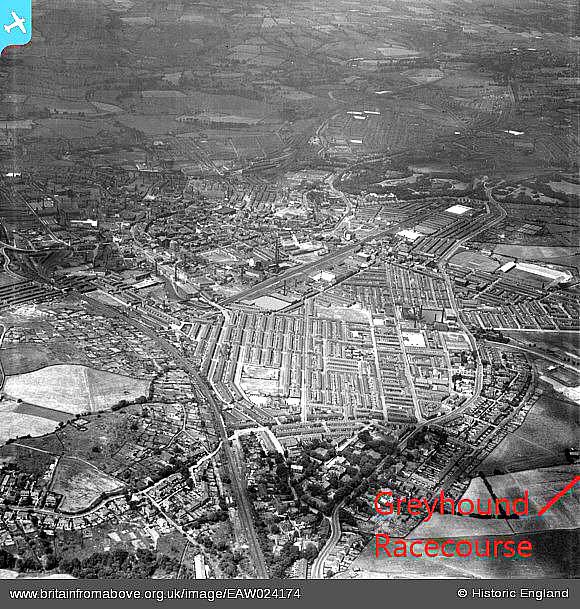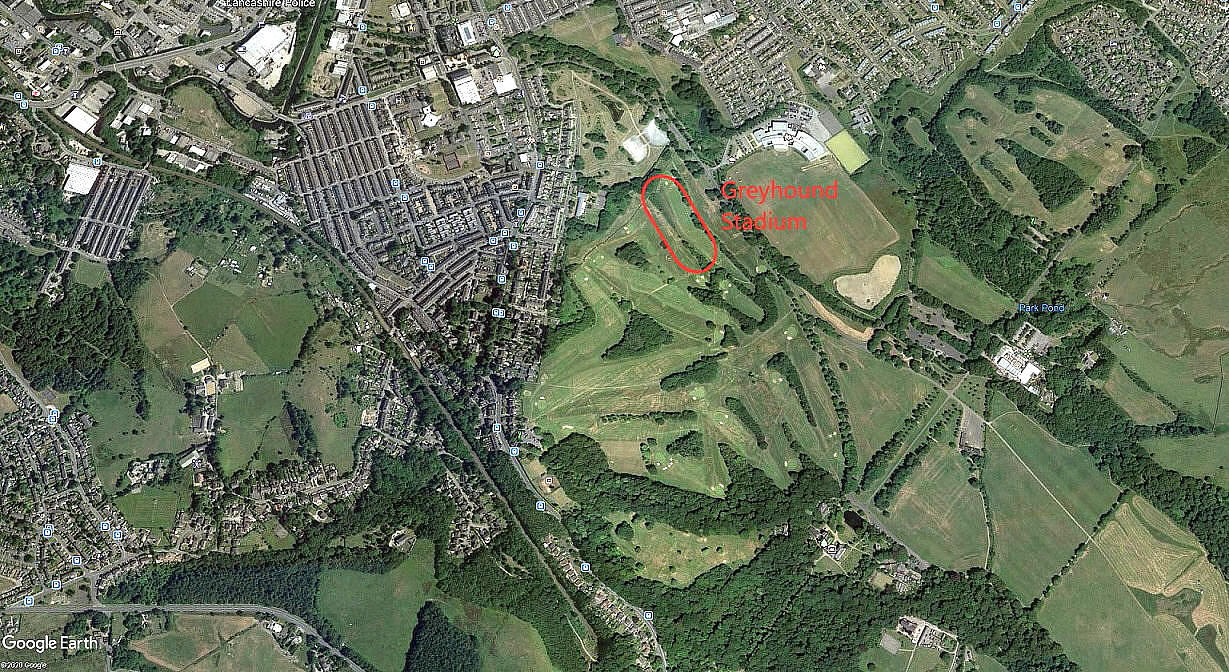Burnley flying sites
Note: This map only gives the position of Burnley within the UK. If anybody can kindly provide more exact locations for these listings, this advice will be most welcome.
BURNLEY: Early airfield?
NOTES: In 1910 a Mr W E Cooke is listed as being experimenting with a monoplane in or near BURNLEY. Unfortunately no (easily found) records appear to exist to confirm his machine either flew or even “hopped”? Is any more known?
Note: This map and the pictures were kindly provided by Mr Michael T Holder.
BURNLEY: Temporary aerodrome
Operated by: Gustav Hamel (Presumably on behalf of the Graham-White Co?)
Location: Griffin Grounds
Period of operation: Saturday 9th November, and Tuesday 12th November 1912
NOTES: It was here that Hamel’s Blériot monoplane had been blown by a gust of wind against some telephone wires damaging the propeller and giving him, “the narrowest escape he had ever had”. It doesn’t appear to be at all obvious whether or not he was airborne at the time of the incident - but it might well be assumed he was.
Mike Holder found an account in the Burnley Gazette regarding Hamel displaying in the "Griffin Grounds", 300 yards from Rose Grove Station, and tells us: "I could not find an exact location in Google, however based on the description of 300 yards from Rose Grove Station they are next to the Griffin Hotel/Public House where the modern developments have been named Griffin Close."
GREYHOUND RACECOURSE
Note: This map and the pictures were kindly provided by Mr Michael T Holder
I can take no credit at all for this latter location. Indeed, Mike Holder, who is a great friend of this 'Guide', found it whilst looking into Capt Fressons activities in the Orkney Islands where he flew with his Highland Airways operation, based in Inverness. As he tells us: "Found this Fresson site searching for Orkney info. The Greyhound Racecourse has gone but I found it on an old map and transferred it to the OS maps available on the National Library of Scotland web site. In the bridge collapse article the River Calder runs about 50 yards east of the Racecourse. From the descriptions of the incident - the crash landing - the flying field is most likely to be the field to the east of the racecourse."
He also found two newspaper articles concerning two events that happened during this short air display period in Burnley during September 1929. Clearly the locals had some interesting times. First, the Evening Telegraph article published on Monday 30th September.
PILOT'S PRESENCE OF MIND.
___________________
'Plane and Passengers Steered to Safety.
_____________
Dramatic Escape Seen by Thousands
"Thousands of Burnley people witnessed an amazing escape of a pilot and two passengers in an Avro aeroplane during demonstration flights, when the machine suddenly developed engine trouble, and but for the presence of mind of the airman, who skilfully steered it into a field within 50 yards of a congested part of the town, a serious accident might have resulted."
"The aeroplane, owned by the North British Aviation Co., and piloted by Flying-Officer E.D. Fresson, (My note: E.E. Fresson), was one of two which had been giving displays."
"After passing the Burnley Greyhound Course, a short distance from the aviation field, the engine was heard to stop, and the plane, which was heading towards the centre of the town, came shooting towards the ground at a remarkable speed. The pilot succeeded in steering it round to a field about 400 yards from the greyhound track."
The North Britsh Aviation C. Ltd was formed in March 1929 and was based at HOOTON PARK AERODROME in CHESHIRE. E.E. (Ted) Fresson was one of three directors. Lance J Rimmer was another, and also a pilot. Indeed, he well might have been flying the other "Avro" mentioned in the article.
The 'Avro' mentioned was an Avro 504K, a type very popular with display and joy-ride operators between the Wars. Between 1929 and 1934 they operated four: G-EBGZ, G-EBIS, G-EBSJ and G-EBXA. The Avro 504 type served in WW1 in roles ranging from trainer to bomber and after the war plentiful war-surplus machines and spares could obtained relatively cheaply. But, without much doubt their big appeal was that Avro could, relatively quickly and affordably, convert the rear cockpit to take two passengers. In effect doubling the revenue earning potential for joy-ride operations.
A BRIDGE COLLAPSES
A bridge collapsing does not, I am certain, appear elsewhere in this 'Guide'. But of course, every rule must be proved with an exception. Mike Holder found this article in the Leeds Mercury, from which I will quote just one passage: "Flying demonstrations have been in progress daily on the Burnley Aviation ground and the bridge collapse occurred tonight, when large numbers of people were hurrying away from the ground after flying ceased."
As an aside, it was mentioned that due to the drought the river was only twelve to eighteen inches deep. When the media and press get all excited today, over a flood or drought, climate change disaster etc,etc. They really should read history. In the UK we live in a climatic 'belt' which extends around the world, where nothing has changed in the last thousand years at least. So probably for much longer. This is most certainly not intended to deny that a speeding up of natural climate change patterns is not speeding up due to human intervention - how could it not be?
We'd love to hear from you, so please scroll down to leave a comment!
Leave a comment ...
Copyright (c) UK Airfield Guide














